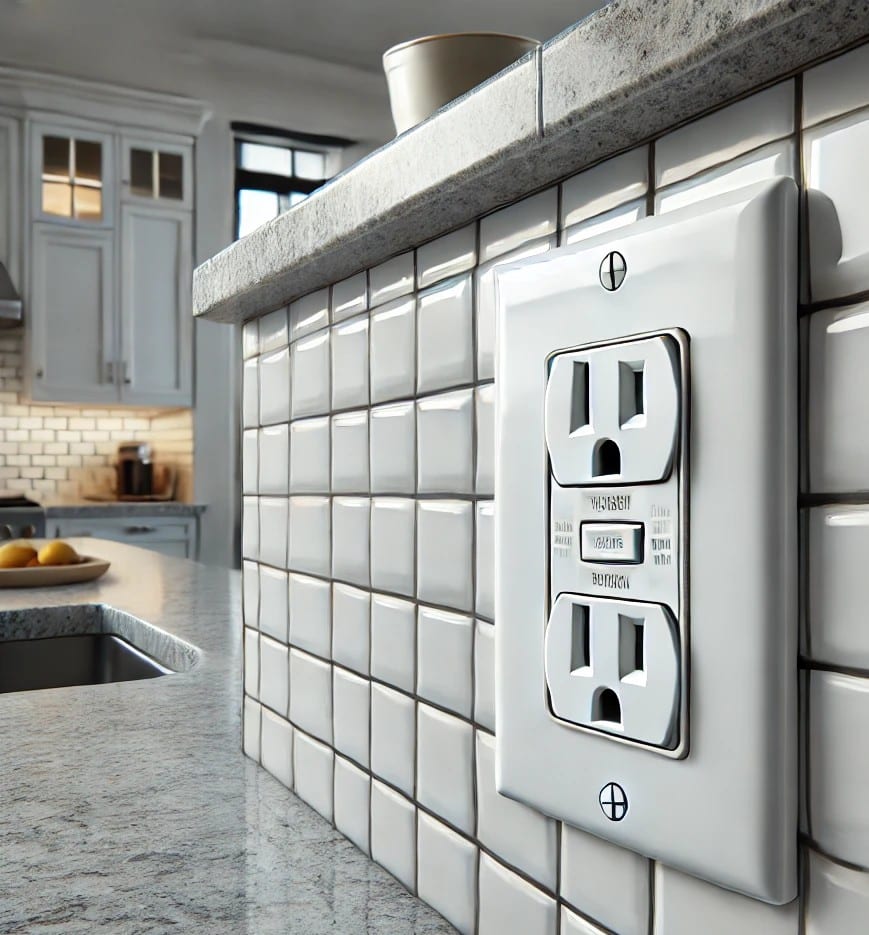
Whether you’re remodeling your kitchen, updating your bathroom, or just wondering why your blender suddenly stopped working, GFCI outlets are a small but critical piece of your home’s electrical safety system. If you live in Denver or Centennial, CO, understanding what a GFCI outlet is and how it works can help you stay safe, up to code, and in control of your power.
Here’s everything you need to know about ground fault circuit interrupters—explained in plain English by the expert Denver electricians and Centennial electricians at Bell Plumbing, Heating, Cooling & Electrical.
GFCI stands for Ground Fault Circuit Interrupter. It’s a special type of electrical outlet designed to prevent electric shock. You’ll usually spot one by the TEST and RESET buttons on its faceplate.
But it’s not just about appearance. GFCIs are built to detect when electricity is taking an unintended path (like through you or water). When that happens, the GFCI immediately cuts off the power to prevent serious injury or even death.
Electricity normally flows through insulated wires and into your appliances. But if there’s any imbalance in that flow—say, from a frayed wire or moisture near the outlet—the GFCI detects it in milliseconds. Even a variation as small as 0.006 amps (6 milliamps) is enough to trip it.
Think of it as a tiny circuit breaker, monitoring the electricity between the “hot” and “neutral” wires. If the GFCI senses current escaping its intended route, it shuts everything down and diverts the electricity safely to the ground.
Because water is a strong conductor of electricity, GFCIs are required in any area of your home where water and electricity are likely to mix.
According to the National Electrical Code (NEC), GFCI outlets are mandatory in:
Even if your home was built before these codes were in place, it’s a smart (and safe) idea to upgrade. Bell can inspect your space and ensure every outlet is up to code—especially if you’re in the middle of a remodel.
Tip: If your GFCI outlets were installed before 2006, testing may not be reliable. You can use an inexpensive outlet tester from a hardware store for peace of mind.
GFCI outlets generally last between 10 to 15 years, but they can fail much sooner. Call a licensed electrician if:
A faulty GFCI may still deliver power, even when its safety function isn’t working. That’s why regular testing matters.
Replacing a GFCI outlet might seem simple, but electrical issues can be tricky. Sometimes the problem isn’t the outlet at all—it could be a wiring issue further down the circuit.
Bell’s electricians in Denver and Centennial have the experience and tools to diagnose problems quickly and safely. Whether you’re upgrading a single outlet or rewiring part of your home, we’ll make sure the work meets NEC requirements and keeps you protected.
Don’t leave your safety up to chance. Whether you’re upgrading old outlets, remodeling your home, or troubleshooting a power issue, Bell Plumbing, Heating, Cooling & Electrical is here to help.
Contact us today to schedule your electrical inspection or outlet upgrade in Denver or Centennial. We’ll make sure your GFCI outlets are working as they should—so you can use your appliances with confidence.
We’re ready to answer your questions or schedule your appointment, call now or book online!
